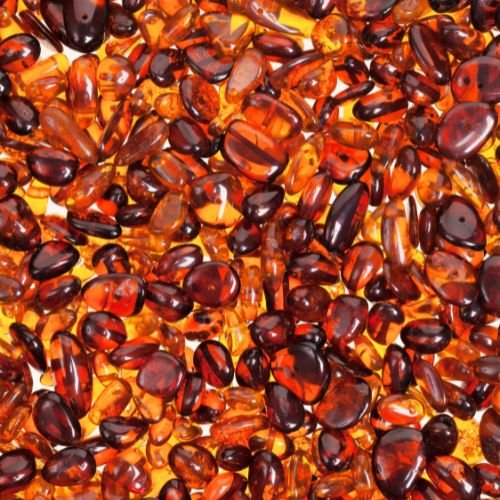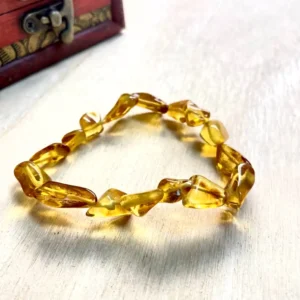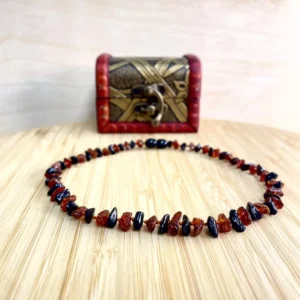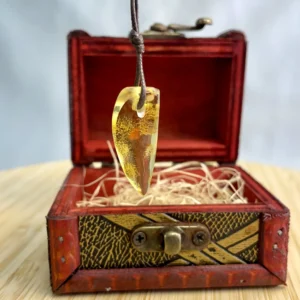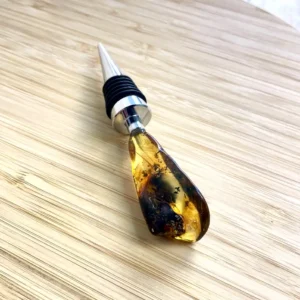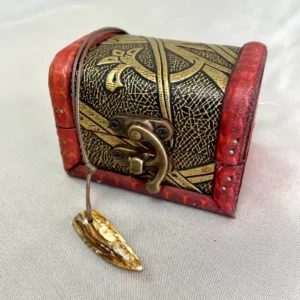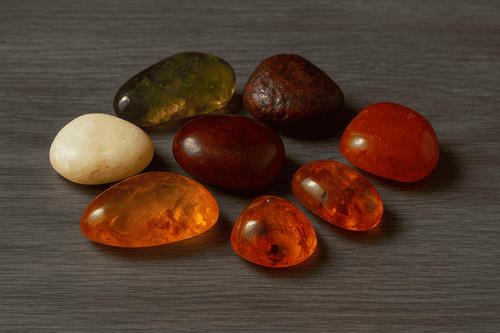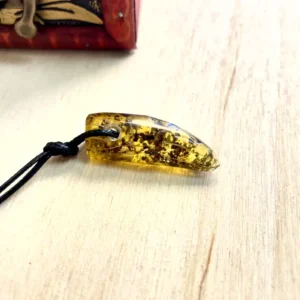Amber has been treasured for thousands of years, worn in amber necklaces, amber bracelets, and amber rings across cultures and centuries. Yet, one question often arises: Is amber a gemstone?
Unlike diamonds, emeralds, or sapphires, amber does not form deep in the Earth’s crust through geological pressure. Instead, it originates as tree resin, hardened and fossilized over millions of years. This unique nature makes amber a fascinating subject – part gemstone, part organic relic of the past.
In this article, we will explore whether amber qualifies as a gemstone, how it is formed, its role in jewelry history, and why it continues to be cherished today.
What Defines a Gemstone?
To understand whether amber is truly a gemstone, we must first ask – what makes something a gemstone?
In classical gemology, gemstones are typically minerals that form deep within the Earth through geological processes. They possess specific crystalline structures, hardness, and durability that allow them to be cut and polished.
However, gemology also recognizes another category: organic gemstones. These are natural materials formed by living organisms rather than mineral processes. Examples include pearl (from oysters), coral (from marine polyps), jet (from fossilized wood), and amber (from fossilized resin).
Amber belongs to this special group of organic gemstones – materials that bridge the world of the living and the eternal. It does not sparkle with crystalline fire like a diamond, but instead glows with the soft, internal warmth of the sun.
Thus, while amber is not a mineral, it absolutely qualifies as a gemstone in the organic sense: rare, natural, beautiful, and durable enough to be used in jewelry.
The Transformation: From Resin to Gem
Amber’s creation is a slow metamorphosis – an alchemy of nature that transforms life into art.
When tree resin seeps out, it begins a process of hardening called polymerization, where light and oxygen help the resin molecules bond together. As the resin becomes buried under layers of earth and sediment, oxygen is cut off. Over millions of years, chemical changes occur, converting the resin into a stable fossil – amber.
This transformation can take 20 to 50 million years, depending on environmental conditions. The resulting substance is light, warm to the touch, and often transparent to translucent, with colors ranging from pale honey to deep cognac, and even rare green, red, or blue hues.
Each piece of amber, especially Baltic amber, carries within it a visible record of its ancient journey. It is this miraculous preservation of life and time that makes amber not just a gemstone, but a bridge between the organic and the eternal.
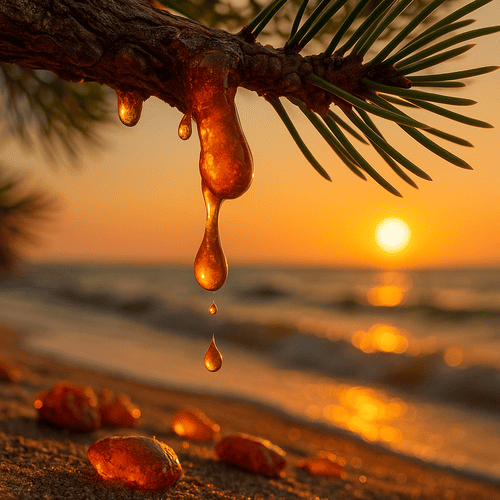
Baltic Amber: The Gold of the North
When people speak of amber as a gemstone, they often refer to Baltic amber, the world’s most famous and abundant variety.
What Is Baltic Amber?
Baltic amber (also known as succinite) was formed approximately 44 million years ago from the resin of prehistoric pine trees that once covered northern Europe. Today, it is found along the coasts of the Baltic Sea – in Lithuania, Latvia, Poland, and the Kaliningrad region of Russia.
Baltic amber contains a unique compound called succinic acid, which makes up to 8% of its composition. This natural component is believed to enhance its color, durability, and energetic properties.
Why Baltic Amber Is Highly Valued
Baltic amber is considered the highest quality amber in the world due to several defining factors:
- Age and purity – it is among the oldest and most chemically stable types of amber.
- Rich color range – from milky yellow to golden honey and deep cherry.
- Inclusions – many specimens contain ancient plant or insect inclusions, increasing their rarity and value.
- Cultural prestige – Baltic amber has been traded and worn for thousands of years, earning the nickname “Gold of the North.”
Because of its beauty, heritage, and timeless appeal, Baltic amber jewelry – including Baltic amber necklaces, bracelets, and rings – is prized worldwide as both adornment and symbol.
Amber Through the Ages: A Gem of Humanity
Amber has been part of human history since the earliest civilizations.
Prehistoric and Ancient Use
Archaeologists have found amber beads and carvings dating back 12,000 years. Prehistoric peoples valued amber for its warmth and its mysterious electric properties – when rubbed, amber attracts small objects due to static electricity. This phenomenon inspired the ancient Greek word for amber: “elektron,” from which we derive the modern word electricity.
The Amber Road
During the Bronze and Iron Ages, amber became a luxury commodity traded across Europe through routes collectively known as the Amber Road. From the Baltic coast, amber traveled southward to Greece, Rome, and Egypt, where it was treasured as a symbol of wealth.
The Classical World
In ancient Rome, amber was worth more than gold. Roman naturalists such as Pliny the Elder described amber as “the tears of the sun,” linking its golden glow to divine light. Wealthy Romans wore amber jewelry and even decorated statues with it.
Medieval and Modern Symbolism
Throughout medieval Europe, amber was regarded as a protective gemstone, often used in rosaries and talismans. In China, amber was called “the soul of the tiger,” symbolizing courage and vitality.
Across cultures and centuries, amber was a gemstone of life, protection, and transformation.
The Qualities That Make Amber Gemlike
Although amber differs from minerals in composition, it possesses every quality that defines a gemstone in beauty and meaning.
Natural Origin
Amber is entirely natural, born from organic processes rather than human manufacturing. Each piece is unique -a natural work of art created by time and Earth’s history.
Rarity and Value
High-quality amber, particularly Baltic amber with inclusions, is rare and valuable. Some museum pieces with perfectly preserved insects are priceless, offering scientific insight alongside beauty.
Aesthetic Appeal
Amber’s range of colors – golden, honey, cognac, cherry, and green – evokes warmth and light. It is luminous rather than reflective, giving jewelry a soft, glowing character.
Cultural and Emotional Significance
From ancient Greece to modern Europe, amber has symbolized sunlight, healing, and eternal life. Its long human connection enhances its gemstone status.
Workability
Amber can be polished, carved, and shaped into beads and settings – qualities essential to gemstone use. Its light weight makes it ideal for amber necklaces and bracelets.
Together, these attributes ensure amber’s place among the world’s most beloved organic gemstones.
Amber’s Symbolism: Light, Life, and Transformation
Amber’s beauty lies not just in its physical form but in the meanings it carries.
The Symbol of Light
Amber’s warm glow has always symbolized the sun – life-giving energy and illumination. To wear amber is to carry sunlight, warmth, and positivity.
The Symbol of Life and Preservation
Because amber often contains preserved life forms, it represents the power to protect and preserve. Each inclusion – a leaf, a flower, a wing – is a memory suspended in golden light.
The Symbol of Transformation
Amber’s transformation from resin to gemstone mirrors our own journey through change and time. It embodies the process of becoming – softness turned to strength, impermanence into eternity.
The Symbol of Connection
Amber links the natural and the human worlds. When worn as Baltic amber jewelry, it connects the wearer to the Earth’s ancient history and the living energy of trees.
Thus, amber’s meaning transcends material value; it is a gemstone of continuity, memory, and transformation.
Amber in Modern Jewelry Design
Today, amber continues to enchant artisans and collectors worldwide. Its timeless glow fits both traditional and contemporary styles.
Baltic Amber Necklaces
Baltic amber necklaces are perhaps the most iconic form, featuring polished beads that radiate light with every movement. They symbolize harmony and communication – worn close to the heart.
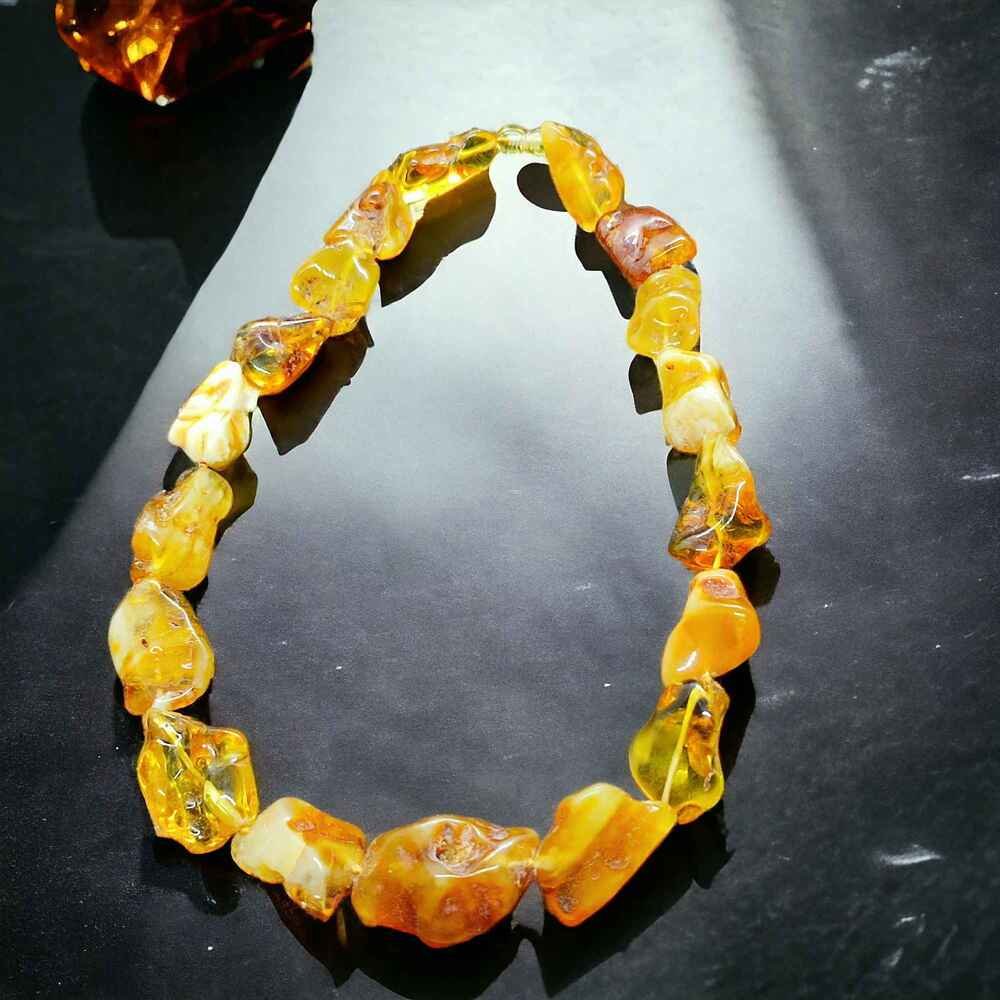
Baltic Amber Bracelets
Baltic amber bracelets wrap the wrist in a circle of warmth, representing balance and protection. Their lightness makes them a joy to wear daily.
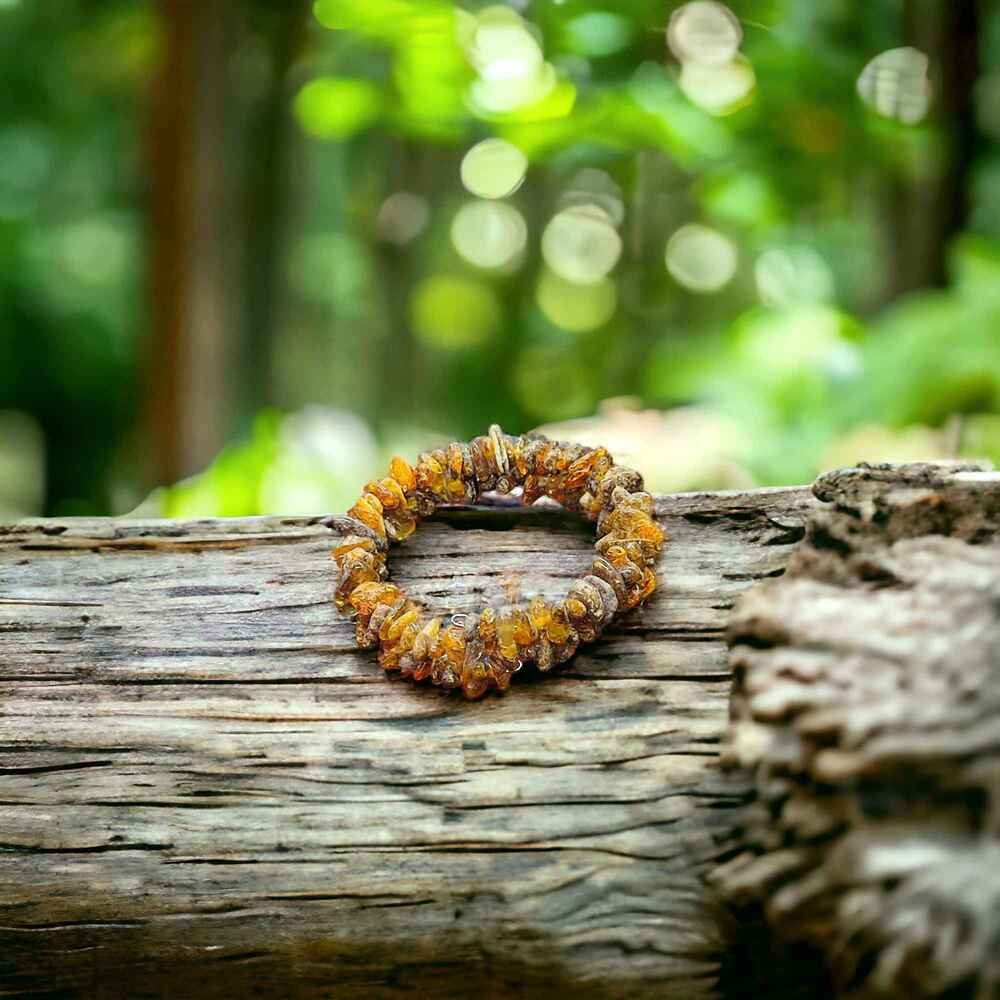
Baltic Amber Rings
Baltic amber rings highlight amber’s unique transparency and color. Set in silver or gold, they symbolize empowerment, creativity, and transformation.
Each jewelry type celebrates a different facet of amber’s gemlike identity – its warmth, lightness, and story of change.
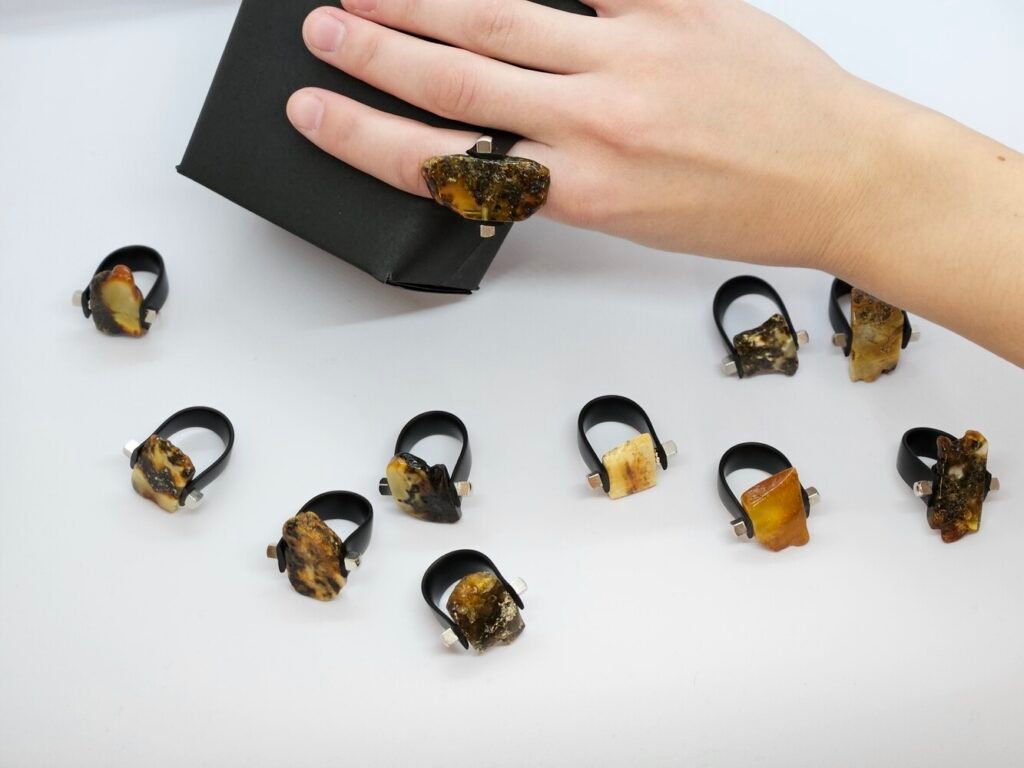
Science Meets Symbolism: Why Amber Is a Gemstone Unlike Any Other
Amber unites two worlds – scientific wonder and spiritual symbolism.
From a geological viewpoint, amber is a fossil; from a gemological one, it is an organic gemstone. From a human perspective, it is a reminder that beauty can emerge from the slow passage of time.
Amber’s formation mirrors life itself: growth, change, endurance, and preservation. It is both ancient and alive, delicate yet enduring.
This dual nature – half living, half eternal – is what makes amber one of the most unique gemstones on Earth.
Frequently Asked Questions About Amber’s Nature
Q1: Is amber a real gemstone?
Yes. While not a mineral, amber is classified as an organic gemstone—a natural, beautiful, and durable material formed from ancient tree resin.
Q2: How old is most amber?
Most Baltic amber is around 44 million years old, formed from the resin of extinct pine trees.
Q3: Why is Baltic amber so famous?
Baltic amber is prized for its quality, rich color range, and historical importance. It’s the most abundant and scientifically studied amber type in the world.
Q4: What makes amber different from minerals?
Amber is light, warm to the touch, and non-crystalline. It’s softer and organic, formed through biological rather than geological processes.
Q5: Why is amber used in jewelry?
Amber’s beauty, lightness, and natural symbolism make it ideal for amber necklaces, amber bracelets, and amber rings. It connects the wearer to nature’s deep history.
Final Thoughts: The Living Gemstone
So – is amber a gemstone?
Yes, but it is far more than that. Amber is the living gemstone, born from trees, shaped by time, and illuminated by the sun. It bridges life and eternity, nature and art, the past and the present.
To wear amber is to wear a story – of forests long vanished, of light preserved through ages, of transformation made visible.
In Baltic amber jewelry – whether a necklace, bracelet, or ring – this story continues to glow, reminding us that even the most fragile moments of life can become timeless treasures.
